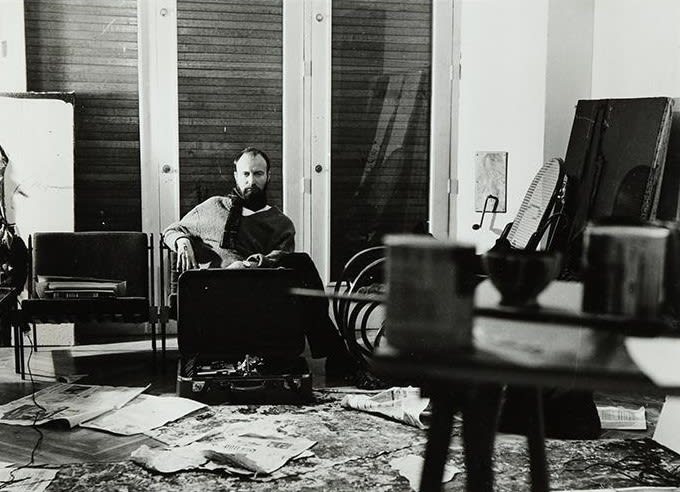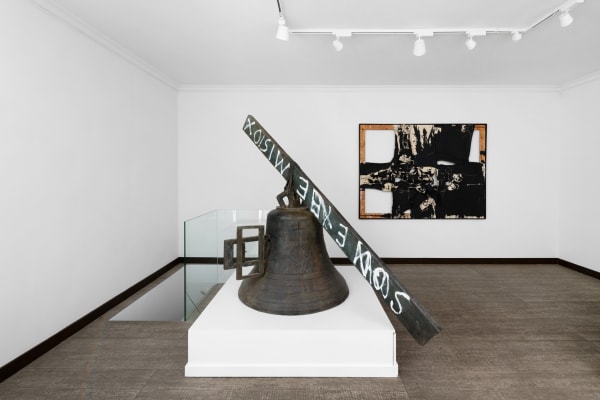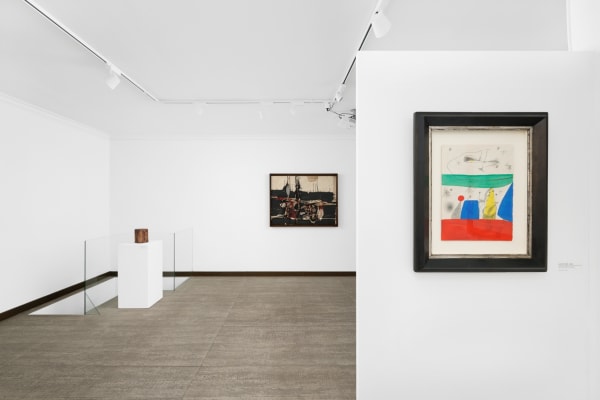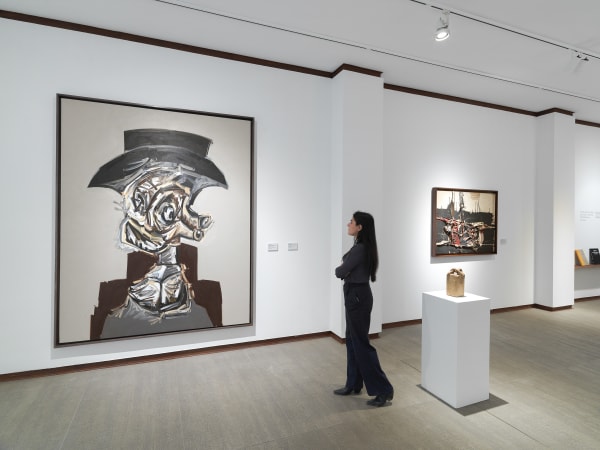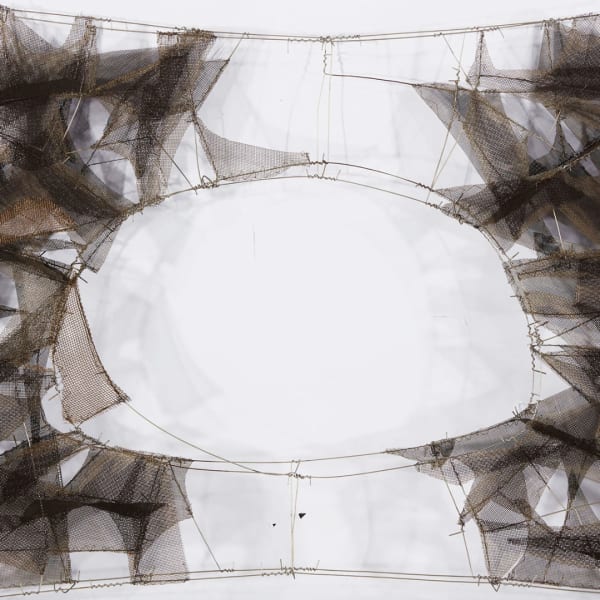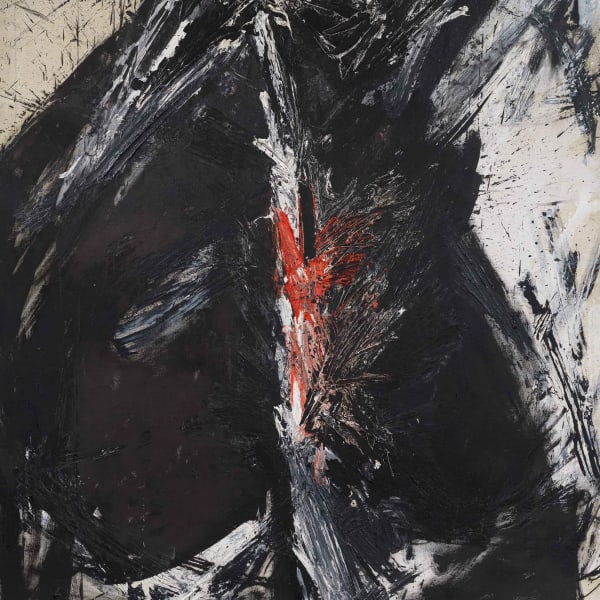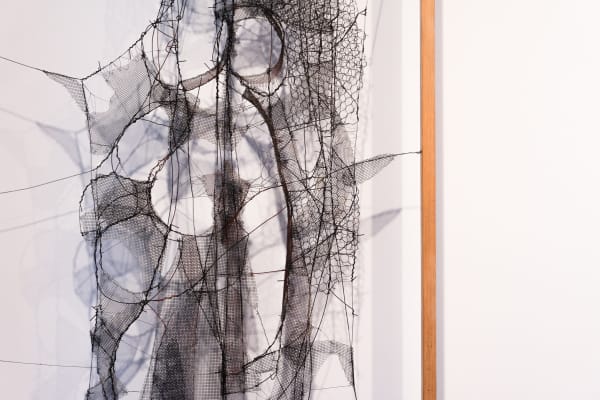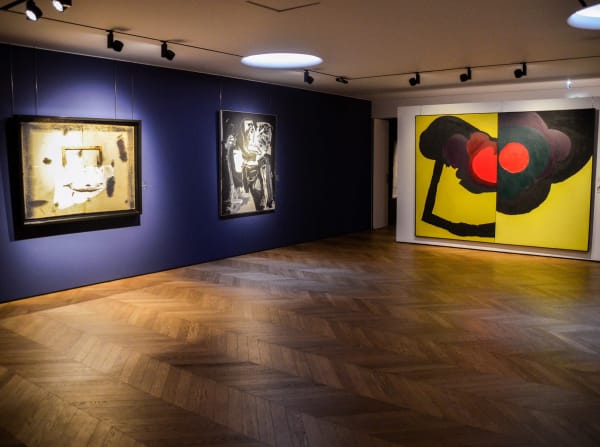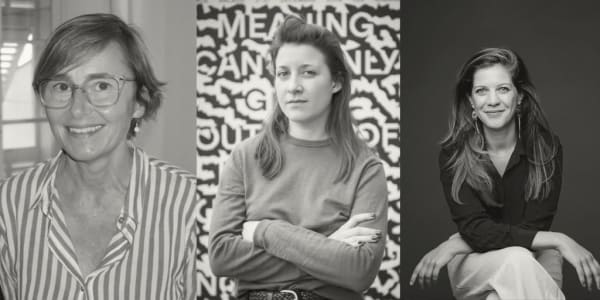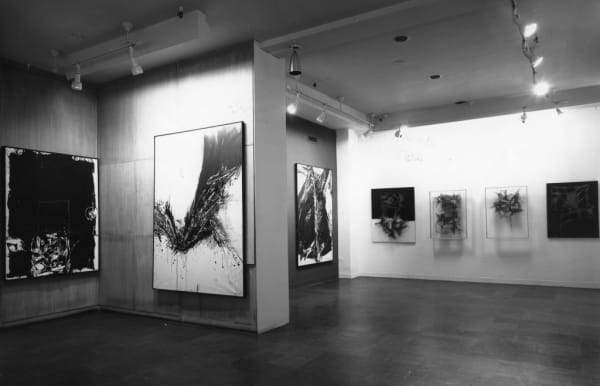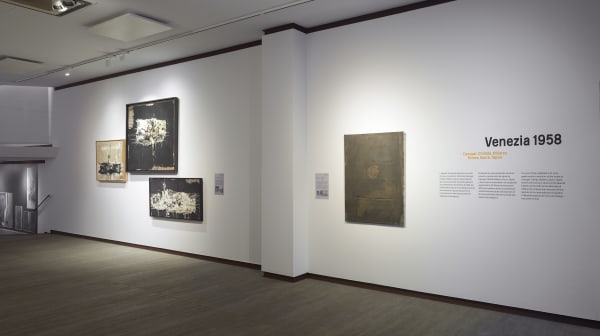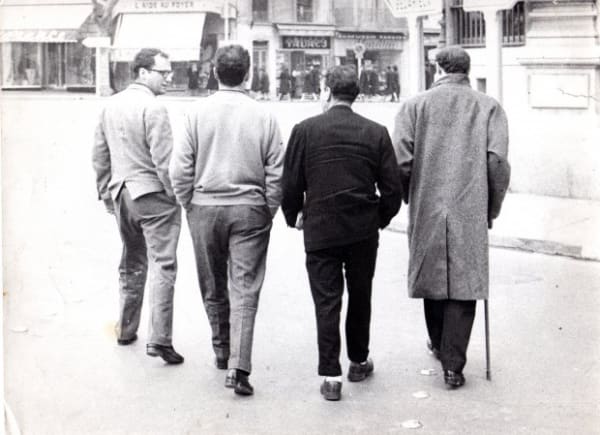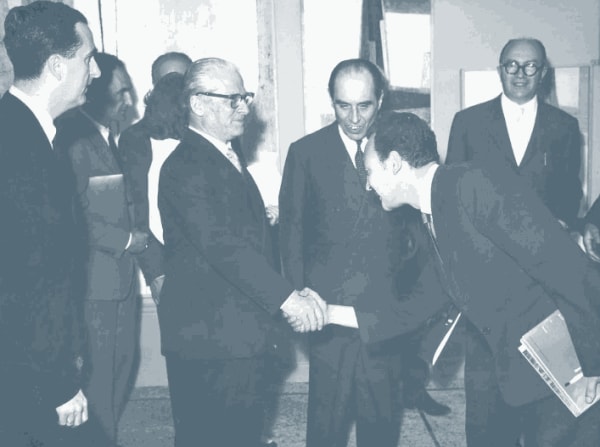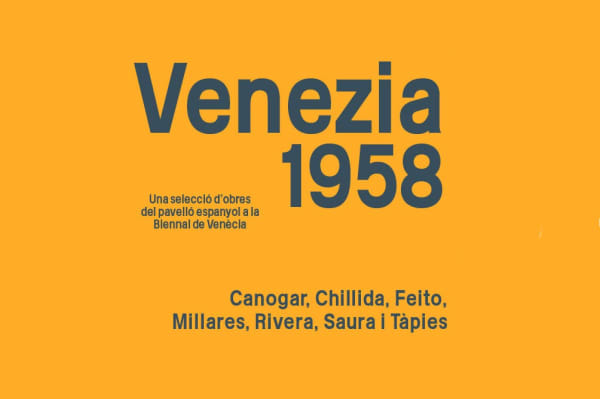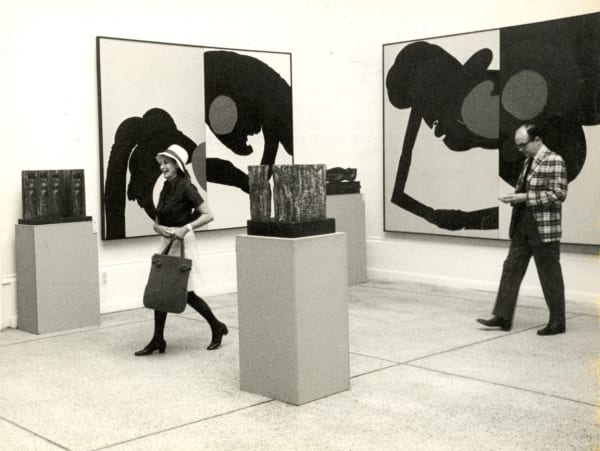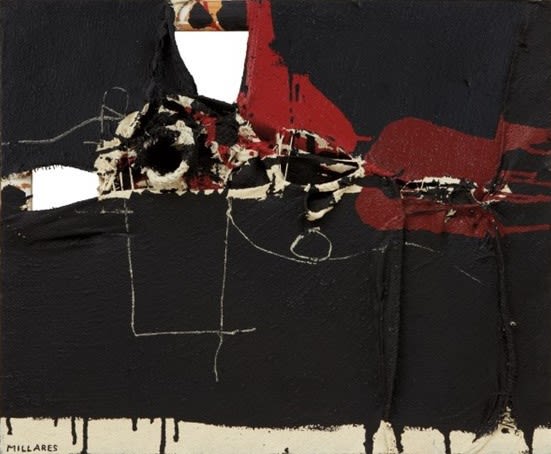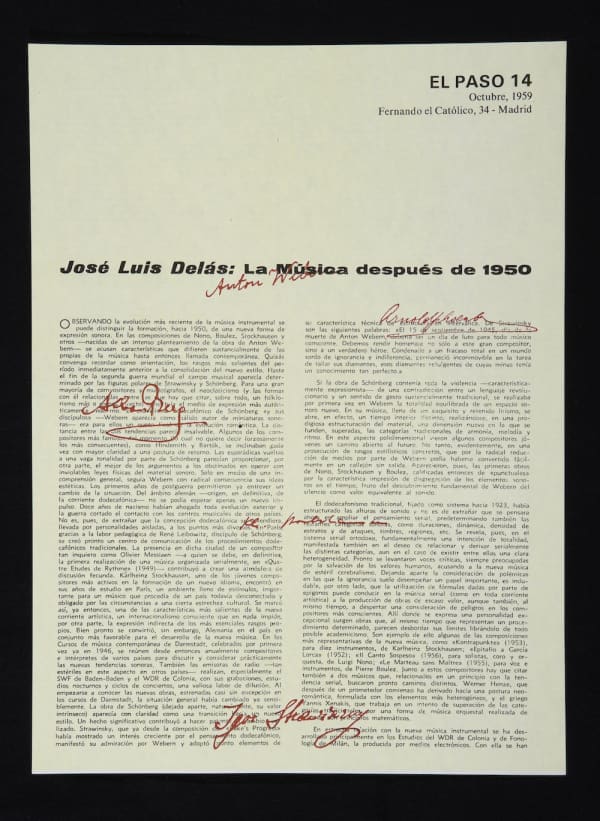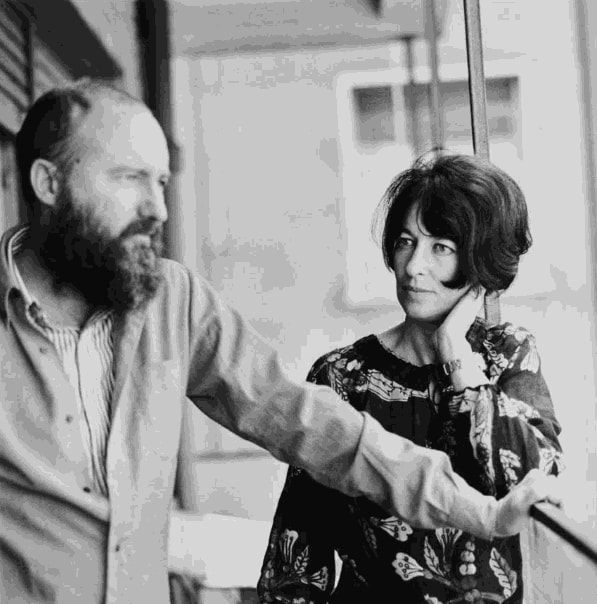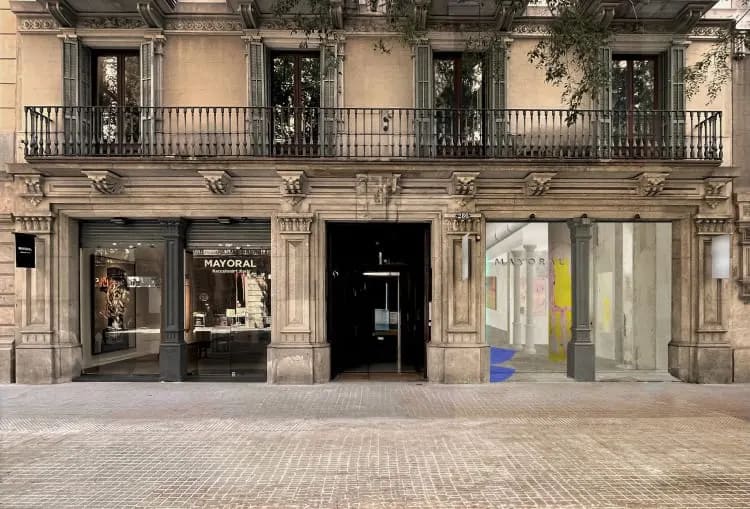Manolo Millares Las Palmas de Gran Canaria, 1926-Madrid, 1972
“[The artist] is the only man, the world, a recorder of things in the raw ... He follows very closely the despair of our time, watches over it and sews"- Manolo Millares
Manolo Millares was a Spanish artist renowned for his significant contributions to the art movement known as Informalism. Inspired by the tragic history of the Spanish Civil War and the subsequent dictatorship of Francisco Franco, Millares channeled his emotions and experiences into his work. He developed a distinctive artistic language characterized by his powerful, textured canvases, often incorporating materials like burlap, ropes, and tar. Millares' art captured the essence of human suffering and the brutality of war, conveying a sense of anguish and vulnerability. His impactful creations not only challenged the traditional conventions of art but also symbolized the resilience of the human spirit in the face of adversity. Millares left an indelible mark on the art world and continues to be recognized as a pioneering figure in Spanish contemporary art.
-

Millares - Miró
Paris 15 Jan - 15 Mar 2026FORTHCOMING...Read more -

(IN)COMMUNICATION
PARIS 2 Mar - 20 Apr 2024MILLARES - MUÑOZ - TÀPIESRead more
This exhibition showcases three exemplary artworks by Manolo Millares (1926–1972), Juan Muñoz (1953–2001), and Antoni Tàpies (1923–2012). These pieces serve as poignant illustrations of the imperative to confront and transcend societal taboos by pioneering innovative modes of artistic expression during the Franco regime in Spain. They underscore the vital role of art in elucidating and articulating the ineffable, thereby challenging prevailing norms and fostering dialogue around previously unspoken subjects. -

EXPLOSION
BARCELONA 11 Jan - 26 Mar 2024Mayoral brings together works by Joan Miró, Antonio Saura, Equipo Crónica, Eulàlia Grau, Antoni Tàpies, Manolo Millares, and Juana Francés presented through the gaze of two explosive scenes from Michelangelo...Read more -

La radicalité à l'oeuvre
PARIS 6 Jun - 21 Aug 2023Mayoral is delighted to announce its summer group exhibition, showcasing a selection of works by post-war artists who, in their individual ways, embraced a radical approach in their creative processes:...Read more
-

Saura in his context
BARCELONA 13 Apr - 30 Jun 2023This exhibition, organized in conjunction with Enrique Juncosa, presents six very characteristic works by Antonio Saura (1930-1998), one of the most important Spanish artists of the 20th century, in dialogue...Read more -

An Hommage to Pierre Matisse
BARCELONA 27 Jan - 12 Apr 2022Mayoral presents an exhibition in celebration of Pierre Matisse, one of the most important modern art dealers in the world, who enabled certain Spanish post-war avant-garde artists to achieve recognition...Read more -

An Hommage to Pierre Matisse
PARIS 15 Sep - 11 Dec 2021Mayoral presents an exhibition in celebration of Pierre Matisse, one of the most important modern art dealers in the world, illustrating how he enabled certain Spanish post-war avant-garde artists to...Read more -

Rivera - Millares. Ethics of Reparation
BARCELONA 15 Apr - 23 Jul 2021Mayoral presents an unprecedented and topical dialogue between Manuel Rivera and Manolo Millares. The show, curated by Carles Guerra, brings together 10 works produced between 1957 and 1972, highlighting the...Read more
-

Zóbel and the Great Post-War Generation
MADRID 12 - 21 Mar 2021Mayoral’s first exhibition in Madrid, ‘Zóbel and The Great Post-War Generation’, will be held from the 11th to 21st March at the Fundación PONS. The exhibition brings together more than...Read more -

Rivera - Millares. Ethics of Reparation
PARIS 14 Jan - 19 Mar 2021Mayoral is pleased to present the first retrospective that brings together the artists Manuel Rivera (1927-1995) and Manolo Millares (1926-1972). First shown in Paris, 'Rivera – Millares. Ethics of Reparation',...Read more -

Venezia 1958
BARCELONA 26 Sep - 4 Dec 2019The Galeria Mayoral revisits an exhibition held in the Spanish Pavilion at the 1958 Venice Biennale. This is the first time an exhibition reunites, more than 60 years after the...Read more -

With Rebellion Awareness is Born
BARCELONA 26 Sep 2018 - 5 Jan 2019Mayoral is pleased to present the exhibition With Rebellion, Awareness Is Born , a look at Spanish art of the postwar period which includes a painstaking selection of works by...Read more
-

Postwar Art in Spain
LONDON 26 Feb - 8 Mar 2018We are pleased and proud to present this exhibition on the art of the Spanish postwar years, featuring exceptional works by Brossa, Feito, Millares, Saura and Tàpies, in London. It...Read more -

Millares. Building Bridges, Not Walls
BARCELONA 21 Apr - 25 Jul 2017Galeria Mayoral is proud to present Millares. Building Bridges, Not Walls , curated by the experts Alfonso de la Torre and Elena Sorokina. Concentrating on Manolo Millares’s notorious late period...Read more
-
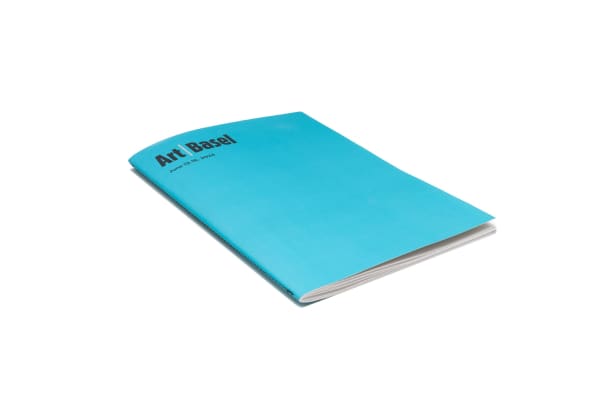
ART BASEL
JUNE 13 - 16, 2024 2024Paperback, 50 pagesRead more
Publisher: Mayoral Investigació
Dimensions: 29.8 x 21 x 0.5 cm -
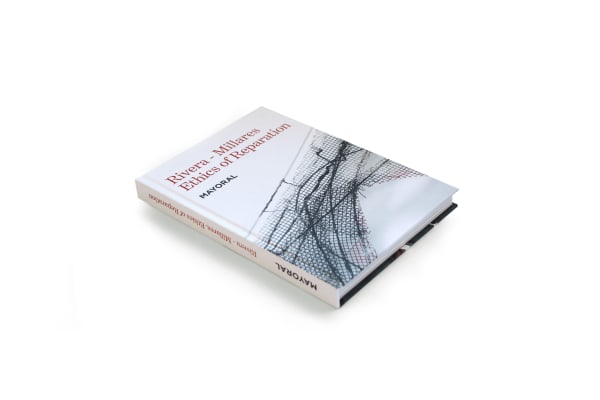
Rivera – Millares. Ethics of Reparation
2021Hard Cover, 175 pagesRead more
Publisher: Mayoral Investigació
Dimensions: 23.8 x 17 x 2 cm -
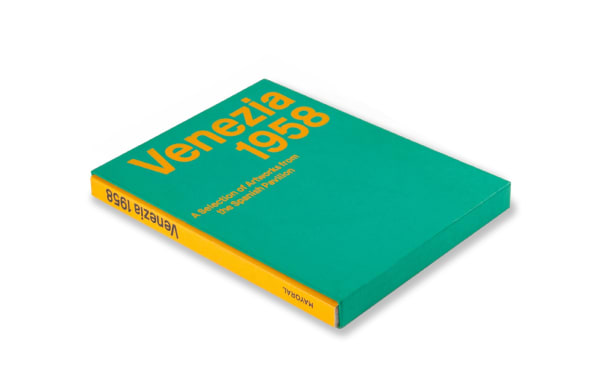
Venezia 1958
2019Hardcover, 198 pagesRead more
Publisher: Mayoral Investigació
Dimensions: 31,5 x 23,5 cm -
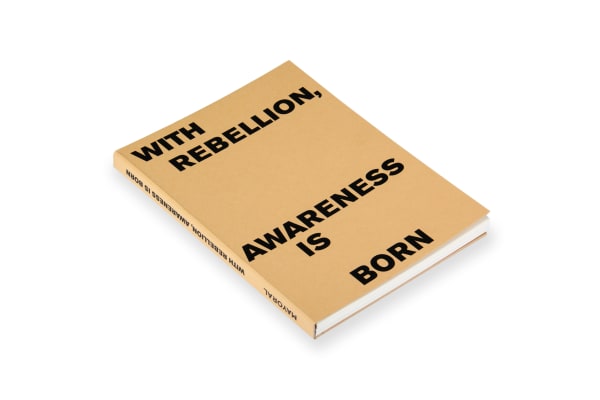
With rebellion awareness is born
2018Hardcover, 120 pagesRead more
Publisher: Mayoral Investigació
Dimensions: 23,5 x 17 cm
-
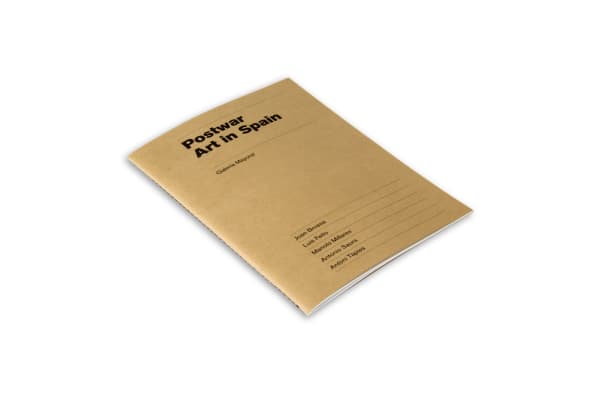
Postwar art in Spain
2018Softcover, 21 pagesRead more
Publisher: Mayoral Investigació
Dimensions: 21 x 14.9 cm -
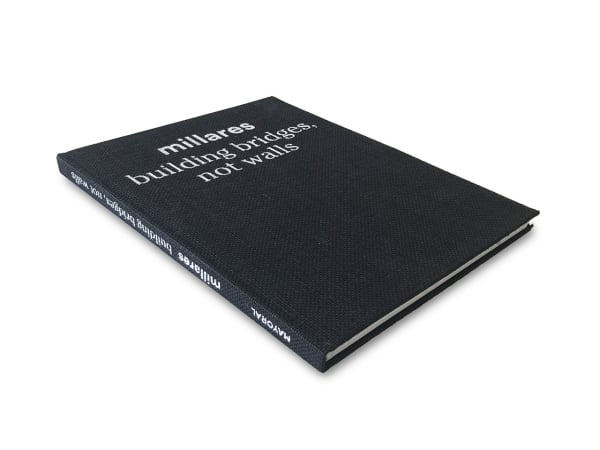
Millares
Building bridges, not walls 2017Hardcover, 137 pagesRead more
Publisher: Mayoral Investigació
Dimensions: 60x30 cm -
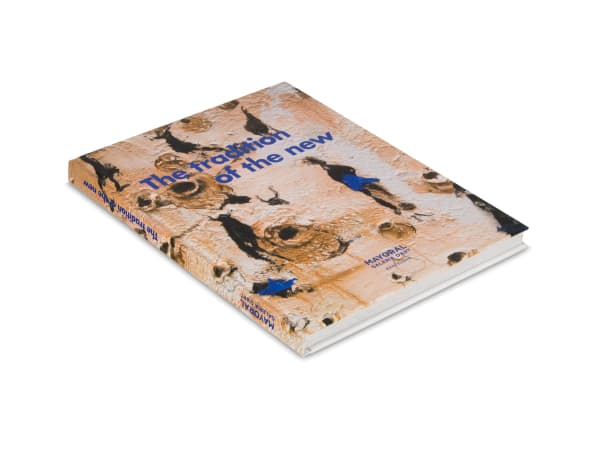
The tradition of the new
2011Hardcover, 152 pagesRead more
Publisher: Mayoral Investigació
Dimensions: 31.7 x 24.5 cm cm
-

Un hommage à Pierre Matisse : une conversation entre Claudine Grammont et Elise Lammer modérée par Siân Folley
Claudine Grammont, Elise Lammer and Siân Folley talks about the exhibition "Un hommage à Pierre Matisse" at Galeria Mayoral, Paris November 19, 2021An Hommage to Pierre Matisse, Galeria Mayoral, Mayoral, Barcelona, Paris, Tàpies, Miró, millares, Canogar, Rivera, Saura, ExhibitiomRead more -

Pierre Matisse and the Spanish avant-garde | Elise Lammer
Elise Lammer, curator of "Pierre Matisse and the Spanish avant-garde" talks about the exhibition at Galleria Mayoral, Paris-Barcelona September 11, 2021It is not rare today to witness the same artist evolving across multiple galleries over the course of their career. Typically an artist would enter...Read more -

Memories of the Material. Rivera and Millares, in an Untimely Country ⎜ Carles Guerra
Carles Guerra on his curated exhibition "Rivera - Millares. Ethics of Reparation" at Galeria Mayoral, Barcelona-Paris January 12, 2021With hindsight, the success of Spanish art at the end of the 1950s is a case not very far removed from the success and the...Read more -

A Shoulder on Which to Bear Time
A conversation between Biraaj Dodiya and Elena Sorokina on Manolo Millares September 3, 2020A Shoulder on Which to Bear Time A conversation between Biraaj Dodiya and Elena Sorokina on Manolo Millares Thursday, July 30, 2020, via Zoom In...Read more -

A Conversation between Wilfredo Prieto and Rosa Lleó
On the occasion of the exhibition "Venezia 1958" at Galeria Mayoral, Barcelona October 31, 2019Mangos, Limes and Flags In 1958, Spain, like Portugal, was an insular, extremely poor country with a strong presence of the military and of Opus...Read more -

A Conversation between Pere Portabella and Vicenç Altaió
On the occasion of the exhibition "Venezia 1958" at Galeria Mayoral, Barcelona October 30, 2019We found ourselves in the dark night of the Franco dictatorship dominated by Castilianity and the cross: National Catholicism. A new generation, which hadn’t fought...Read more -

Bearing Witness to the 1958 Venice Biennale | Luis González Robles
Luis González Robles, curator of the Spanish Pavilion, speaks about the 29th Venice Biennale October 11, 2019Spanish Artists in the 29th Venice Biennale International Art Exhibition Spanish Pavilion, 1958 For this 29th Venice Biennale a series of works by artists representative...Read more -

On the 1958 Venice Biennale, Still | María Dolores Jiménez-Blanco
María Dolores Jiménez-Blanco talks about the 1958 Venice Biennale October 5, 2019The Spanish Pavilion at the 29th Venice Biennale, the edition held in 1958, has become an inevitable landmark in narratives to do with Spanish art...Read more -

With rebellion, awareness is born | Video
Video tour of the exhibition "With rebellion, awareness is born" at Galeria Mayoral, Barcelona November 21, 2018Mayoral is pleased to present the exhibition 'With rebellion', awareness is born, a look at Spanish art of the postwar period which includes a painstaking...Read more -

Manolo Millares: Recent Paintings | Excerpt
Manolo Millares talks about this recent paintings, 1960. PUBLISHED IN THE EXHIBITION CATALOGUE "MILLARES. BUILDING BRIDGES, NOT WALLS" November 14, 2018ART TODAY APPROACHES THE DIVIDING LINE with the imposible. The impossible as an incentive for artistic creation always carries in itself a force of the...Read more -

Music After 1950 | José Luis Delás
Text written in "El paso 14" on October 1959 «La Música después de 1950» by José Luis Delás. Published in the exhibition catalogue "Millares. Building Bridges, not walls" May 10, 2017José Luis Delás: Music After 1950 Observing the most recent evolution of instrumental music one can identify the development of a new form of sound...Read more -

A conversation about Manolo Millares with Elvireta Escobio and Alfonso de la Torre | Llucià Homs
Llucià Homs talks with Elvireta Escobio, widow of Manolo Millares, and Alfonso de la Torre May 4, 2017On the AVE train heading to Madrid I reviewed the multitude of notes I have been taking over the last few weeks while reading here...Read more


